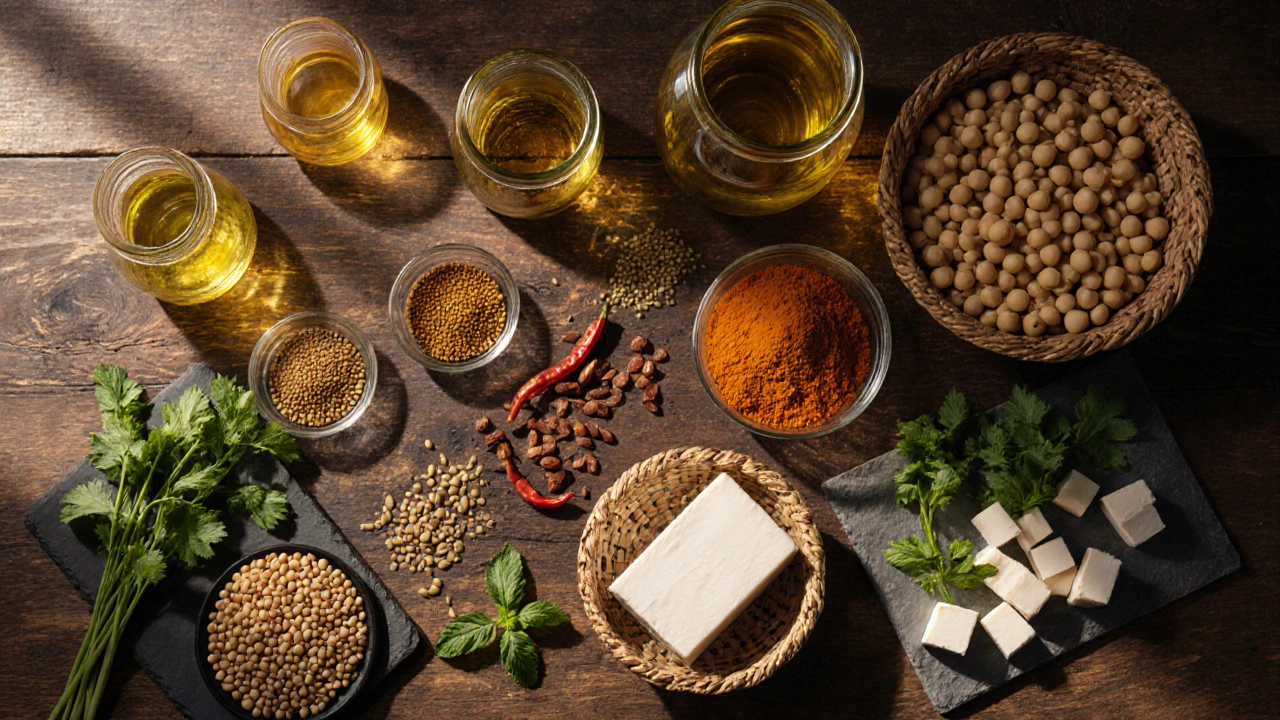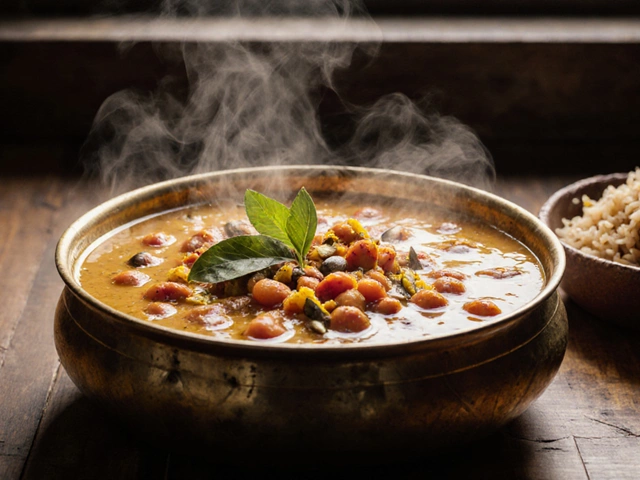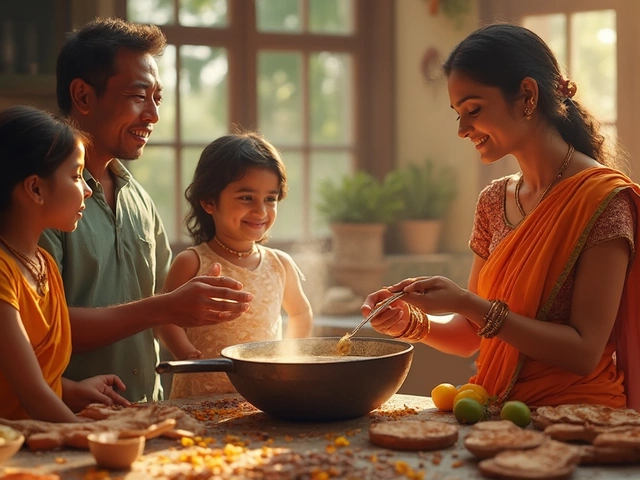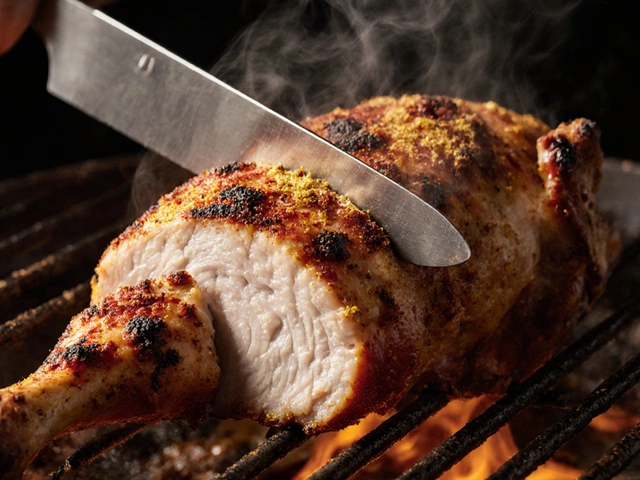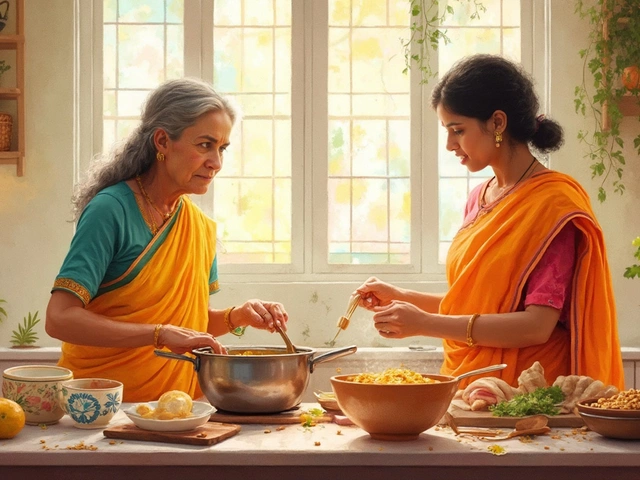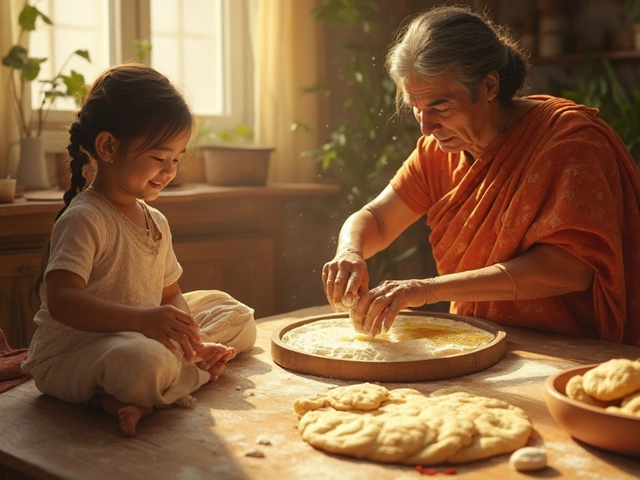Craving flavorful meals without meat? Indian cuisine offers a treasure trove of vegetarian dishes that pack aroma, color, and nutrition. Below you’ll find a curated list of the best vegetarian Indian dishes, tips for quick preparation, and a handy checklist to keep your kitchen ready for any craving.
Why Indian Vegetarian Food Stands Out
India’s culinary heritage is rooted in plant‑based cooking. Historically, religious traditions and regional agriculture shaped a diet rich in legumes, grains, and fresh vegetables. This gives Indian vegetarian dishes a natural balance of protein, fiber, and micronutrients - all delivered through bold spices that boost flavor without relying on meat.
Essential Ingredients You’ll Keep on Hand
- Whole spices (cumin, coriander, mustard seeds, fennel)
- Ground spices (turmeric, garam masala, red chili powder)
- Legumes: lentils, chickpeas, black gram
- Paneer, tofu or soy chunks for protein‑rich options
- Fresh herbs: cilantro, mint, curry leaves
- Cooking fats: ghee, mustard oil, coconut oil
Having these staples stocked means you can whip up a meal in under 30 minutes, even on a busy weekday.
Iconic Vegetarian Dishes Across India
Below is a quick‑look table that groups popular dishes by region, main vegetable or legume, and typical spice level. Use it to decide what flavor profile you want to explore first.
| Dish | Region | Main Ingredient | Spice Level |
|---|---|---|---|
| Chole Bhature - a hearty chickpea curry with fluffy fried bread. | North India | Chickpeas | Medium |
| Paneer Butter Masala - soft cottage‑cheese cubes in a rich tomato‑cream sauce. | Punjab | Paneer | Low‑Medium |
| Masoor Dal - red lentil soup seasoned with cumin‑tadka. | All over India | Red lentils | Low |
| Aloo Gobi - spiced cauliflower and potato stir‑fry. | North India | Potato & Cauliflower | Medium |
| Idli - steamed rice‑and‑lentil cakes, often served with coconut chutney. | South India | Rice & Urad dal | Low |
| Matar Paneer - peas and paneer in a lightly spiced tomato gravy. | North India | Peas & Paneer | Low‑Medium |
| Vegetarian Biryani - fragrant basmati rice layered with mixed vegetables and aromatic spices. | All over India | Mixed veg | Medium |
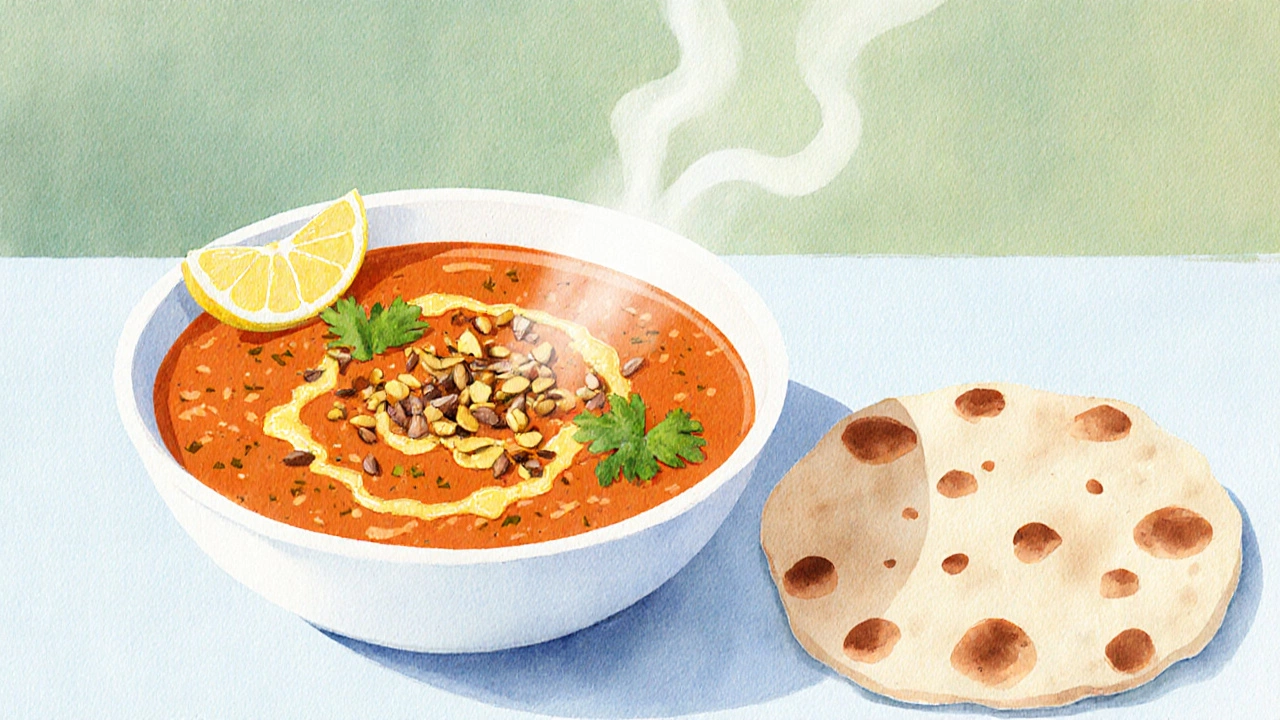
Deep Dive Into Seven Must‑Try Dishes
Chole Bhature
This Punjabi classic pairs a thick, tangy chickpea stew (chole) with deep‑fried leavened bread (bhature). The chickpeas are simmered with tomatoes, ginger‑garlic paste, and a blend of garam masala, amchur (dry mango powder), and a pinch of asafoetida for depth. Serve with sliced onions, lemon wedges, and a fresh mint‑coriander chutney.
Paneer Butter Masala
Butter masala is the go‑to comfort dish for many. Cube paneer and lightly fry it, then coat in a sauce made from pureed tomatoes, cashew paste, butter, and a dash of cream. Finish with a sprinkle of kasuri methi (dried fenugreek leaves) for that signature aroma. It pairs beautifully with naan or paratha.
Masoor Dal
Red lentils cook fast, making this dal a staple for busy households. After the lentils soften, temper mustard seeds, cumin, dried red chilies, and curry leaves in hot ghee. Pour the tempering over the dal, add a splash of lemon juice, and garnish with fresh cilantro. Serve with steamed rice or roti.
Aloo Gobi
Golden cauliflower florets and tender potatoes are tossed in a turmeric‑laden oil, then simmered with ginger, garlic, and a pinch of hing (asafoetida). The result is a dry, slightly crisp vegetable mix that’s perfect for scooping up with whole‑wheat chapatis.
Idli
Idli batter is a fermented mixture of rice and urad dal (black gram). The fermentation gives the cakes a fluffy texture and subtle sour note. Steam the batter in small molds for 10‑12 minutes and serve with coconut chutney, sambar (a lentil‑vegetable stew), or a drizzle of ghee.
Matar Paneer
A classic home‑cooking favorite, this dish combines sweet green peas (matar) with soft paneer cubes in a tomato‑onion gravy. Lightly spiced with cumin, coriander, and a splash of garam masala, it’s both nutritious and kid‑friendly. Pair it with rice or flatbread.
Vegetarian Biryani
Layer partially cooked basmati rice with a mixture of sautéed carrots, beans, peas, and potatoes that have been seasoned with biryani masala, saffron, and fried onions. Cover tightly and let steam on low heat for 20 minutes. The result is a fragrant, one‑pot wonder that impresses guests without any meat.
Quick Cooking Tips for Vegetarian Indian Meals
- Prep spices in bulk. Roast cumin, coriander, and fennel seeds once, grind them, and store in an airtight jar. This saves minutes every time you cook.
- Use a pressure cooker for dals and beans. It cuts cooking time by 60% and preserves nutrients.
- Finish dishes with a drizzle of ghee or a squeeze of lemon. Both add a bright finish that elevates simple veg curries.
- Batch‑cook staple bases like tomato‑onion puree or ginger‑garlic paste; freeze in portions for later use.
- When a recipe calls for “tadka” (tempering), pour the hot‑oil spice mix over the finished dish to release hidden aromas.
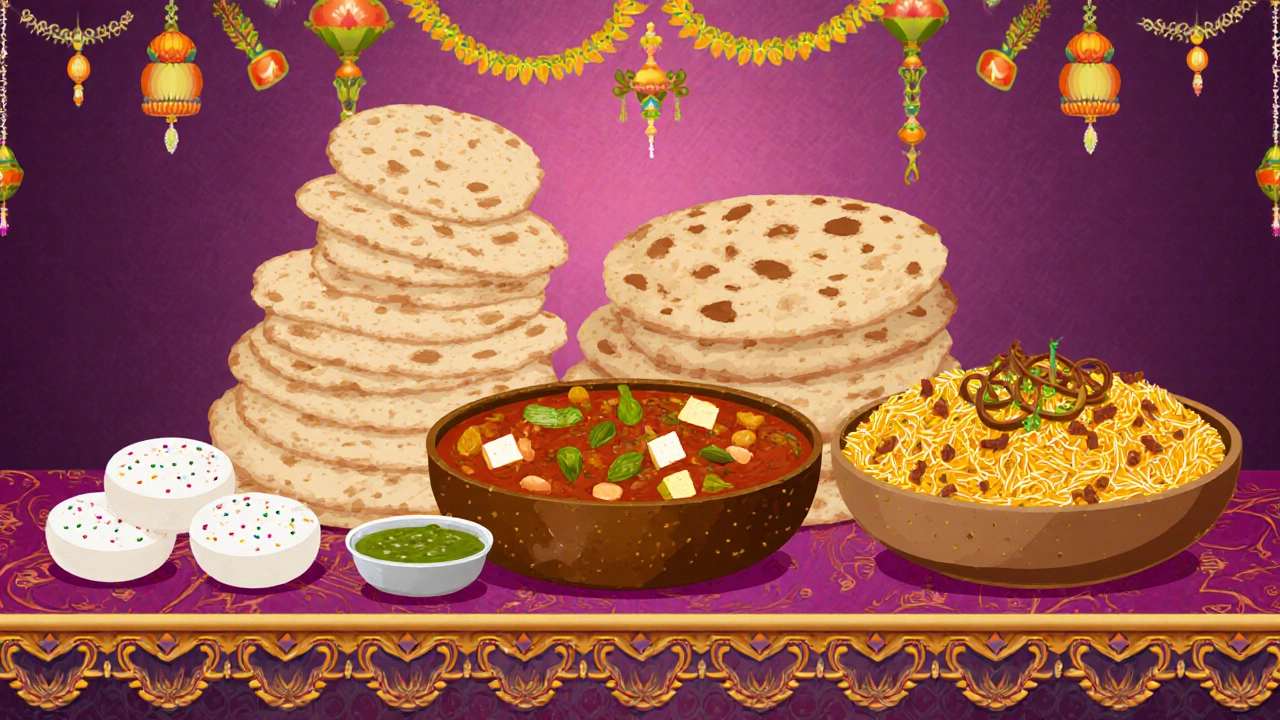
Nutrition Snapshot
Vegetarian Indian dishes deliver a balanced mix of macronutrients:
- Protein: Paneer, lentils, chickpeas, and peas provide 15‑25 g per serving.
- Fiber: Whole spices and vegetables add 5‑8 g, supporting digestion.
- Vitamins & Minerals: Turmeric offers curcumin (anti‑inflammatory), while leafy herbs supply iron and vitamin C.
- Healthy Fats: Ghee and mustard oil add flavor without excessive saturated fat when used in moderation.
Essential Checklist Before You Start
- ✔️ Verify you have fresh ginger, garlic, and onions - the flavor foundation.
- ✔️ Check spice shelf: cumin, coriander, turmeric, garam masala, red chili powder.
- ✔️ Ensure you have a pressure cooker or instant‑pot for quick dals.
- ✔️ Keep a stock of paneer or tofu for protein‑rich plates.
- ✔️ Have a small jar of ghee ready for finishing touches.
Cross this list off and you’ll be set to tackle any of the dishes above, even on a weekday night.
Frequently Asked Questions
Can I make these dishes gluten‑free?
Yes. Most vegetarian Indian recipes rely on rice, lentils, and gluten‑free flours. Just replace wheat‑based breads like naan with gluten‑free roti or serve with rice.
How long can cooked dal be stored?
Refrigerated dal stays fresh for 3‑4 days. For longer storage, freeze in airtight containers for up to 2 months; thaw and reheat gently on the stove.
Is paneer suitable for a vegan diet?
Paneer is made from dairy, so it isn’t vegan. To keep the dish vegan, swap paneer with tofu, soy‑based paneer, or roasted cauliflower.
What’s the best way to control spiciness?
Start with half the listed amount of chili powder or fresh chilies. You can always add more later. A splash of cream, coconut milk, or a dollop of yogurt also mellows heat.
Can I freeze bhature for later use?
Yes. Shape the dough, freeze the raw bhature on a tray, then transfer to a zip bag. When needed, let them thaw and fry directly - they’ll puff up nicely.
Explore these dishes, tweak the spices to suit your palate, and enjoy the wholesome, aromatic world of vegetarian Indian dishes. Happy cooking!





